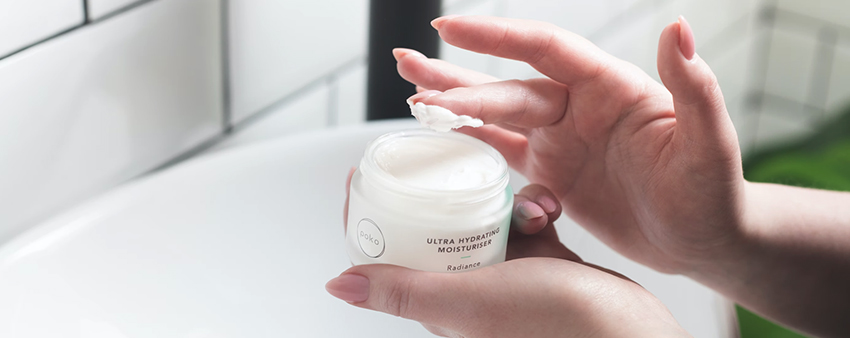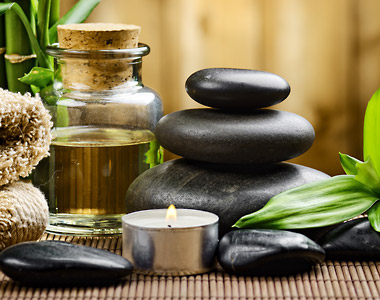
All it takes is a quick glance across the shelf at a spa or retail store to see the wide range of skin care products that are available to buy. Whether you need a general moisturizer, a hydrating balm for under your eyes, or a heavy-duty cream for the soles of your feet, it can be difficult to choose the right one if you are not familiar with the ingredients.
In this blog we will go through the three types of ingredients in moisturizers, and help you understand what they do and why they are important. The best moisturizers for you will depend on the condition of your skin, as well as environmental factors that cause loss of moisture in the skin. Knowing what to look for on the ingredients list will allow you to make informed choices about what to buy and what your skin needs.
Three Types of Ingredients for Your Moisturizer
Occlusive Ingredients
Occlusive ingredients – which comes from the Latin word meaning “to block or hide” – form a protective barrier over your skin. This layer locks in moisture, preventing it from evaporating off the surface and disappearing into the air. Due to their protective nature, occlusive ingredients are very important on skin that is bombarded by dry or harsh environmental conditions. For example, our lips not only experience the dry air and wind around them, but also endure irritation from food, utensils and the tongue. This rubbing irritation pulls moisture out of the lips. As well, the skin on the lips is thinner than other parts of the body and is more prone to becoming beaten down by the weather. Occlusive ingredients protect the lips from these harsh conditions.
Occlusive ingredients do not add any additional moisture by themselves, but they are often the key to preventing further moisture loss in dry climates. In a city like Calgary, where the cold weather can make your skin feel cracked and chapped, moisturizers with these ingredients are important in ensuring the problem does not get worse.
The most common occlusive ingredients you will find are lanolin, mineral oil, beeswax, olive oil, and petroleum jelly. Moisturizers such as Gehwol Med Salve for Cracked Skin is very effective because of the heavy occlusives it contains. Although these occlusives are great for the feet, elbows and back of the hands, they are not recommended on the face as they are too heavy and would clog pores and cause other problems with facial skin. A common occlusive ingredient for the lips is beeswax, but the lips require more than just an occlusive moisturizer.
Emollient Ingredients
Another word with a Latin root – this time from the word emollientis, “something that is soft and soothing” – these ingredients soften the skin and smooth down rough, dry edges all the way to the cellular level. More often than not, they come in the form of an oil that repels water as it works into the miniscule cracks that have formed in dry, irritated skin. Some of these emollient substances can even begin the healing process, which makes them a crucial ingredient in treating skin conditions like eczema or psoriasis.
Emollients improve the way your skin feels, but like occlusives, they do not actually add more moisture to it – they are generally used to reduce feelings of roughness or dryness while helping stressed skin to heal. Common examples are baby oil, ceramide, and mineral oil – in fact, almost any type of oil has these properties.
The emollient ceramide is naturally found in the upper layers of the skin, with about 50% of the skin’s moisture barrier being composed of it. Like other emollients, ceramide forms a protective barrier around the cells of the skin. The sun and wind break down naturally occurring ceramide in the skin, so a product like GM Collin’s Daily Ceramide Comfort is very helpful for skin health especially in the harsh winter weather. Although ceramide surrounds the cells of the skin, it is not an occlusive as it doesn’t really prevent or block water loss. Rather, ceramide is like the glue that holds the moisture barrier cells together, and those prevent water loss. When ceramide breaks down due to sun, aging, and wind, the cells are not held together and water loss occurs. Since ceramide production decreases with age, it is an important ingredient in anti-aging skin care.
Humectant Ingredients
Related to the word humid, humectants are ingredients that attract water. They are widely used in cosmetics and personal care items – conditioners, lotions, cleansers, lip balms, and so on – because this affinity for water makes them a valuable asset when trying to improve your skin’s moisture levels.
Humectants applied to the surface of the skin will draw water molecules from deeper layers of tissue or from the environment, placing them instead into the epidermis for added moisture – and with an occlusive agent added, they prevent the water from evaporating out into the ambient air. Many humectants also act as emollients, creating a foundation for healthier, more hydrated skin that retains moisture and feels better. Some of them can even encourage the shedding of dead skin cells, paving the way for new ones to grow.
Humectants can make up a big portion of any moisturizer, and some of the most popular ones include things like glycerine, propylene glycol, aloe vera, hyaluronic acid, honey, and urea. The most well-known humectant (which also has emollient properties) is probably Vitamin E, an antioxidant used all over the world to soothe inflamed or dry skin, as well as helping it recover and retain lost hydration – making it a perfect choice to use on a sunburn.
Hyaluronic acid is a humectant that occurs naturally in the skin, and it is a vital one – it holds up to 1000x its weight in water. Water is essential for healthy skin, so having reservoirs of water in the skin due to hyaluronic acid cannot be overemphasized. As we age, hyaluronic acid production slows down, which is why anti-aging products contain it; skin care procedures such as radiofrequency and micro-needling also stimulate the skin to produce more hyaluronic acid, making them invaluable to skin health. For homecare, a product such as GM Collin’s Hyaluronic Filler Serum penetrates to all layers of the skin, adding hyaluronic acid as well as stimulating the skin to produce more. To boost the effect of your hyaluronic acid serum or cream, be sure to apply it to damp skin – you want water pulled from the environment and not from your skin.
Which Type of Moisturizer Should I Use?
Winters in Calgary can be tough on your skin – the low humidity means that plenty of water can get lost in the air. If you want to make sure you are giving your skin enough moisture, we have all the occlusives, emollients, and humectants you will need to keep that healthy glow.
However, sometimes a big arsenal of moisturizers is not enough to get your skin back to a proper hydration level. Dry, dead skin cells on the surface of the skin prevent moisturizers from getting down to the live skin. Scrubbing at these dull dry cells does not work and it only irritates and damages the young new cells below the surface – but this is where a spa level, anti-aging facial can cause an immediate and long-lasting boost to the health of the skin.
If you want additional insights on exactly what products would be best for you, the estheticians at Spa Escape can provide plenty of recommendations based on your specific needs. We also have many relaxing, moisturizing, and rejuvenating services, like facials, manicures, and even a Dead Sea Mud Wrap. Reach out today to find out how we can help you look, feel, and be your best!

